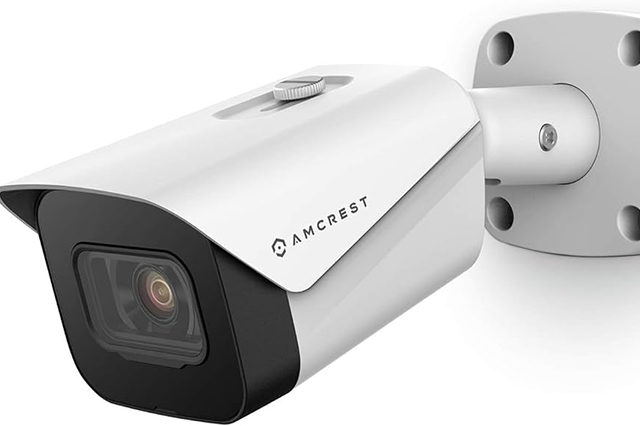IP Camera
IP Camera
An Internet Protocol (IP) camera is a type of digital video camera that is used for surveillance and can send and receive data via the internet or a computer network. Unlike traditional analog CCTV cameras, IP cameras can digitize and compress video footage directly on the camera itself. They use the Internet Protocol for communication, which allows them to be accessed and controlled remotely.

Key features of IP cameras include:
Resolution : IP cameras generally offer higher resolution than analog cameras, providing clearer and more detailed images.
Remote Access : Users can access the live feed or recorded footage from an IP camera remotely over the internet. This is especially useful for monitoring purposes when you are away from the location where the camera is installed.
Power over Ethernet (PoE) : Many IP cameras support PoE, which means they can be powered and receive data over a single Ethernet cable. This simplifies installation and reduces the need for separate power cables.
Motion Detection and Alerts : IP cameras often come with built-in motion detection capabilities. When motion is detected, the camera can send alerts or notifications to the user, providing an added layer of security.
Pan-Tilt-Zoom (PTZ) functionality : Some IP cameras have PTZ capabilities, allowing users to remotely control the camera’s pan, tilt, and zoom functions for a wider range of coverage.
Wireless Connectivity : While many IP cameras use Ethernet cables for data and power, some models also offer wireless connectivity (Wi-Fi), providing more flexibility in camera placement.
Storage Options : IP cameras can store footage locally on an SD card or external storage device, or they can transmit the data to a network video recorder (NVR) or cloud storage for centralized storage and management.
Integration with Other Systems : IP cameras can be integrated with other security systems and devices, such as alarms, access control systems, and home automation systems.
When setting up an IP camera system, it’s important to consider factors such as network bandwidth, security protocols, and the storage requirements for recorded footage. Additionally, ensuring the security of the camera itself, including setting strong passwords and regularly updating firmware, is crucial to prevent unauthorized access.
